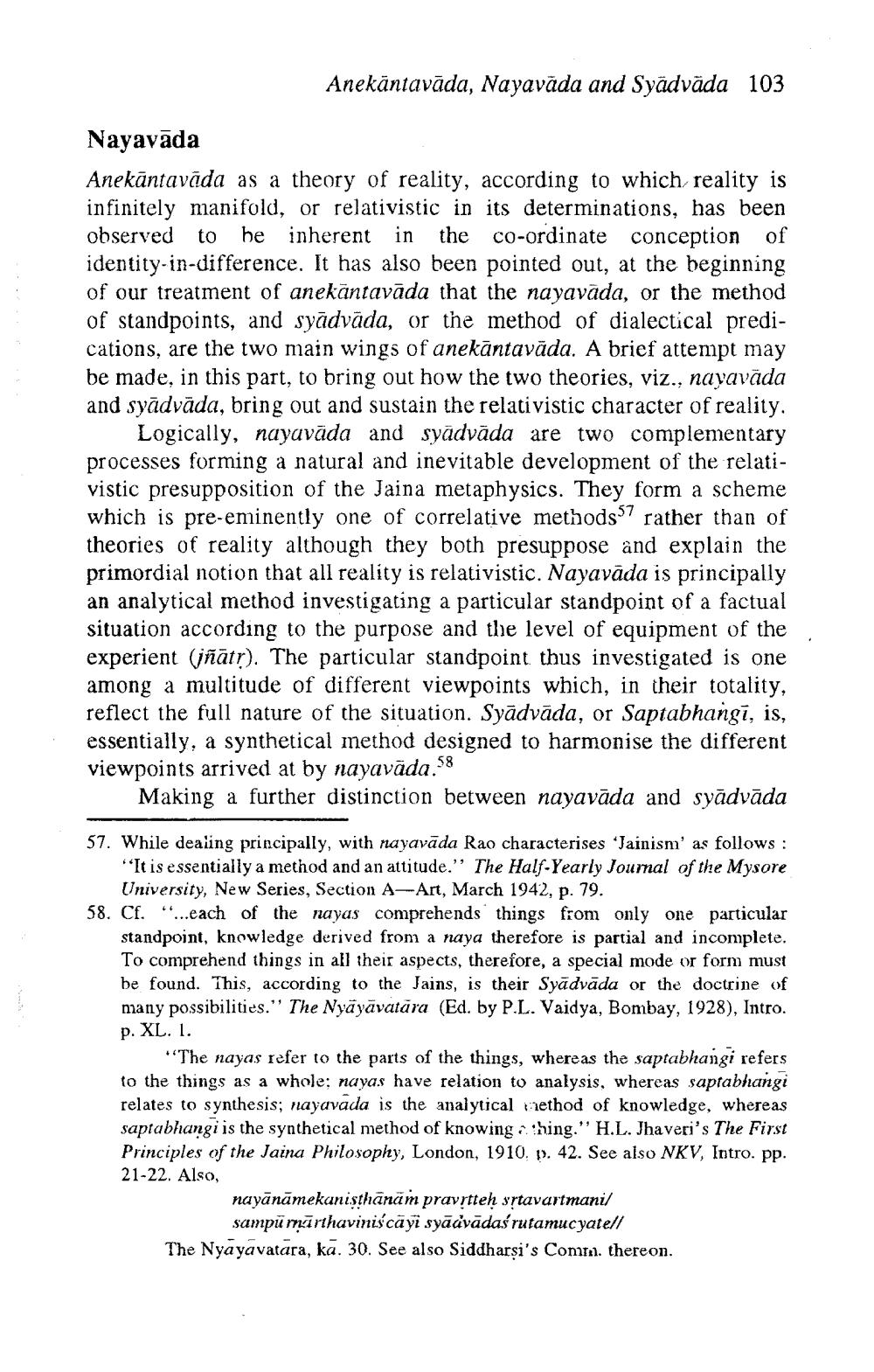________________
Anekāntavāda, Nayavāda and Syädvāda 103
Nayavāda Anekāntavāda as a theory of reality, according to which reality is infinitely manifold, or relativistic in its determinations, has been observed to be inherent in the co-ordinate conception of identity-in-difference. It has also been pointed out, at the beginning of our treatment of anekantavāda that the nayavāda, or the method of standpoints, and syādväda, or the method of dialectical predications, are the two main wings of anekāntavāda. A brief attempt may be made, in this part, to bring out how the two theories, viz., nayavāda and syādvāda, bring out and sustain the relativistic character of reality,
Logically, nayavāda and syādvāda are two complementary processes forming a natural and inevitable development of the relativistic presupposition of the Jaina metaphysics. They form a scheme which is pre-eminently one of correlative methods $7 rather than of theories of reality although they both presuppose and explain the primordial notion that all reality is relativistic. Nayavāda is principally an analytical method investigating a particular standpoint of a factual situation according to the purpose and the level of equipment of the experient (jñāts). The particular standpoint thus investigated is one among a multitude of different viewpoints which, in their totality, reflect the full nature of the situation. Syādvāda, or Saptabhangī, is, essentially, a synthetical method designed to harmonise the different viewpoints arrived at by nayavāda.58
Making a further distinction between nayavāda and syādvāda
57. While dealing principally, with nayavāda Rao characterises 'Jainism' as follows :
**It is essentially a method and an attitude." The Half-Yearly Journal of the Mysore
University, New Series, Section A-An, March 1942, p. 79. 58. Cf. “...each of the nayas comprehends things from only one particular
standpoint, knowledge derived from a naya therefore is partial and incomplete. To comprehend things in all their aspects, therefore, a special mode or form must be found. This, according to the Jains, is their Syādvāda or the doctrine of many possibilities."' The Nyāyāvatāra (Ed. by P.L. Vaidya, Bombay, 1928), Intro. p. XL. 1.
"The nayas refer to the parts of the things, whereas the saptabhangi refers to the things as a whole; nayas have relation to analysis, whereas saptabhangi relates to synthesis; nayavada is the analytical method of knowledge, whereas saptabhangi is the synthetical method of knowing thing." H.L. Jhaveri's The First Principles of the Jaina Philosophy, London, 1910. p. 42. See also NKV, Intro. pp. 21-22. Also,
nayānāmekanisthānam pravrtteh sstavartmani/
sampū marthaviniscayi syāávādas rutamucyatell The Nyayavatara, kā. 30. See also Siddharsi's Comun. thereon.




